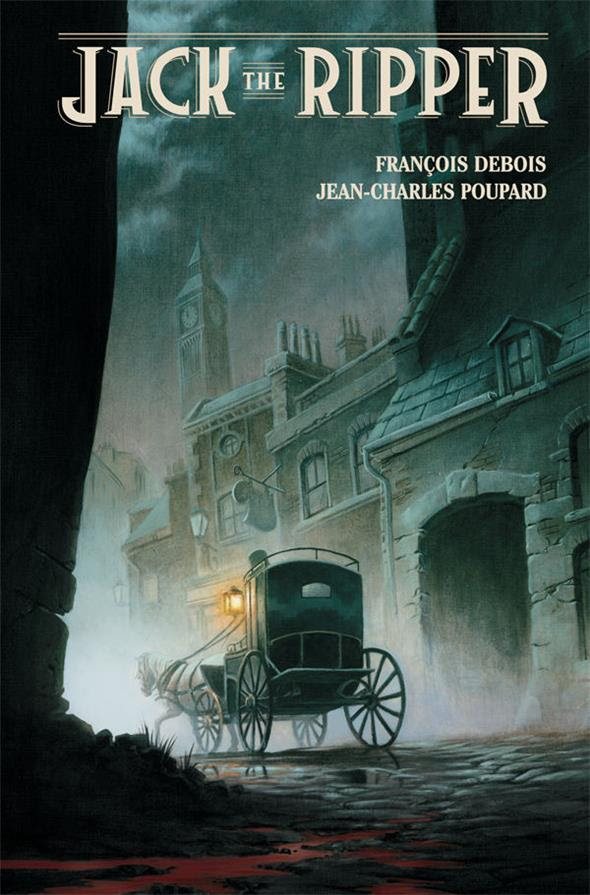
 As casual criminologists or fans of networks that delve into a variety of nefarious deeds, whenever there’s a program or book that shows a new interpretation of one of the crimes of the century, we become intrigued. Perhaps that’s why “Jack The Ripper†a graphic novel from Francois Debois by the title alone may be compelling enough to take a look at.
As casual criminologists or fans of networks that delve into a variety of nefarious deeds, whenever there’s a program or book that shows a new interpretation of one of the crimes of the century, we become intrigued. Perhaps that’s why “Jack The Ripper†a graphic novel from Francois Debois by the title alone may be compelling enough to take a look at.
Was Jack the Ripper a member of the upper class, who preyed on what he considered the vermin of society? Was he actually a she, a nurse who was, at the very least mentally disturbed? Or was there something even more frightening and sinister at play?
The elements of the case are there. Several prostitutes end up mutilated in an efficient, surgical manner. It takes place in Whitechapel and the year is 1888. With that information Debois runs away with an intriguing narrative. The head of this conundrum of a case Abberline of Scotland Yard has to deal with bureaucrats who have no clue as to what they’re doing, xenophobia, classicism and a vigilante who’s striving for power.
Being squeezed from each side while trying to find a criminal before he/she strikes again is maddening enough. And, if these were the worst of his problems then this would be your run of the mill detective stories. But it isn’t. Instead Abberline has so much thrown at him alongside his own secrets that as a reader you can’t help but get sucked in.
The case gets solved and then it doesn’t. Events get tied up neatly then get unraveled as viable suspects increase and are eliminated simultaneously. How Debois handles it is by going deeply into a-what if type conspiracy that will leave you reading this graphic novel with all the lights on. That and you won’t be able to trust anyone around you. There’s this sense that anyone is capable of doing anything with the right stimulus. How do you find a murderer when anyone can be a murderer?
Along with the storyline the artwork does not disappoint. Jean-Charles Poupard unapologetically designs his characters in a realistic style. He tells much of the story through the first few pages. There are no words, still you can feel the suffocating atmosphere, sense the intense despair and smell the stench of the neglected east end slum. To see all of that with the violence through close-ups of the characters puts you in the drama in a way that traps you. In essence you can’t escape and must continue reading. Visually and narrative-wise you will become completely invested in the lives of these characters.
As plausible tales based on real events go “Jack the Ripper†will leave you with questions of your own. You may even question your own sanity or at the very least have moments of Deja vu. In the DC Universe, Batman and the Joker have been argued to be two sides of the same coin. Likewise, in the literary world, Sherlock Holmes and Moriarty have several similarities. In these worlds of fiction, lines are continually blurred. When will Batman cross the line? Will he ever kill the Joker? We see that in the end of one of Holmes’ stories both he and Moriarty plunge to their deaths. However, in recent retellings Moriarty has been resurrected, leading to the question of are there any clear-cut heroes? Clearly distinct lines can lead to bad drama. Readers love complexity where flawed heroes may have some empathy for those they go after. Still one major idea that Debois has planted for his reader is that you should never trust someone who identifies too much with their query.

Leave a Reply